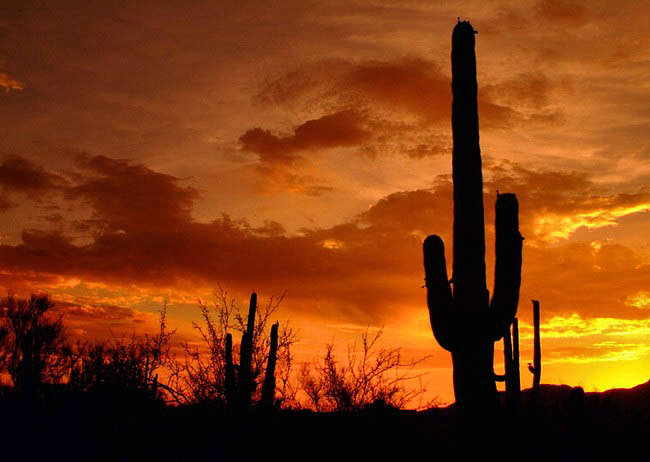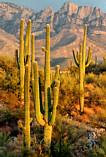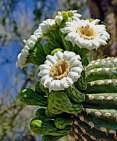|
Scenic USA - Arizona Saguaro East District |

| Photos by Cliff Hamilton Cliff Hamilton Photography |
This classic desert view, spread across a Rincon Mountain backdrop, captures a mature saguaro cactus at sunrise in a stark silhouette. An icon of the Sonoran Desert, the saguaro makes such a striking sight, one that most photographers would love to add to their portfolio.
Just east of Tucson, desert visitors find the Rincon Mountain District of the Saguaro National Park (Saguaro East) the larger and more remote of two separate sections of the park. A short Cactus Forest Drive loops over a hilly landscape, giving a short intro to the 60,000 acre parkland.  While the short Desert Ecology Trail and Cactus Forest Trail are built for the casual park visitor, the challenging Tanque Verde Trail cuts diagonally across the park, connecting with a web of trails that encircle the Manning Campground. Although no drive-up camping sites exist in the park, a half dozen backcountry sites are found spread throughout the park.
While the short Desert Ecology Trail and Cactus Forest Trail are built for the casual park visitor, the challenging Tanque Verde Trail cuts diagonally across the park, connecting with a web of trails that encircle the Manning Campground. Although no drive-up camping sites exist in the park, a half dozen backcountry sites are found spread throughout the park.
Once backcountry permits are obtained, some 120 miles of hiking trails offer a peaceful look at the park. You'll not find the giant saguaro cactus at high altitudes, but an aging forest lies at the base of the Rincon Mountains. Few people experience this part of the Sonoran wilderness, but those willing to hike or follow trails on horseback, will find the desert is filled with life.  Along with desert cacti and other desert plants and shrubs, the majestic Rincon Mountains are wooded in scrub oak, and forests of Douglas fir and ponderosa pine. After sundown the desert springs to life with various desert animals, including bats, coyotes, javelinas and bobcats. When the desert cools the animals begin their prowl for food. During the day, the cactus wren, western kingbirds and American kestrels seem unaffected by the heat.
Along with desert cacti and other desert plants and shrubs, the majestic Rincon Mountains are wooded in scrub oak, and forests of Douglas fir and ponderosa pine. After sundown the desert springs to life with various desert animals, including bats, coyotes, javelinas and bobcats. When the desert cools the animals begin their prowl for food. During the day, the cactus wren, western kingbirds and American kestrels seem unaffected by the heat.
The park is open every day of the year, but most agree that early spring, from March through May, is the best time to visit. Aside from cooler weather, desert plants put on their show of springtime blooms, while the giant saguaro typically waits on late May and early June to display its showy flowers.
NPS Park Map

|
Additional Area Attractions |
|
Copyright © 2025 Benjamin Prepelka
All Rights Reserved
